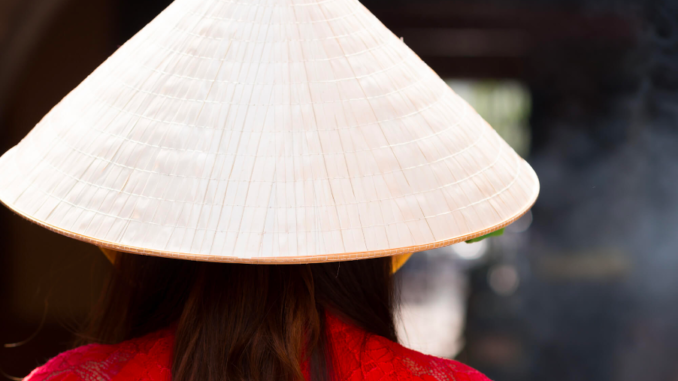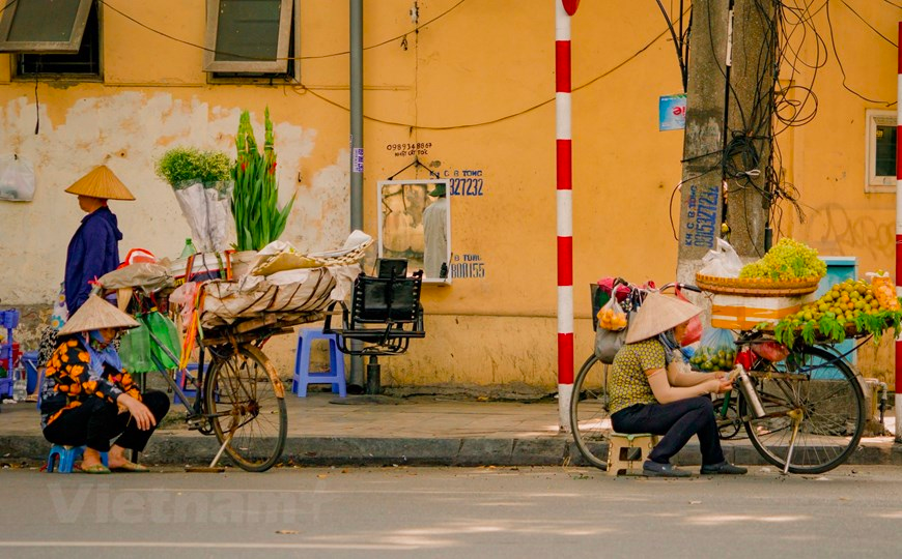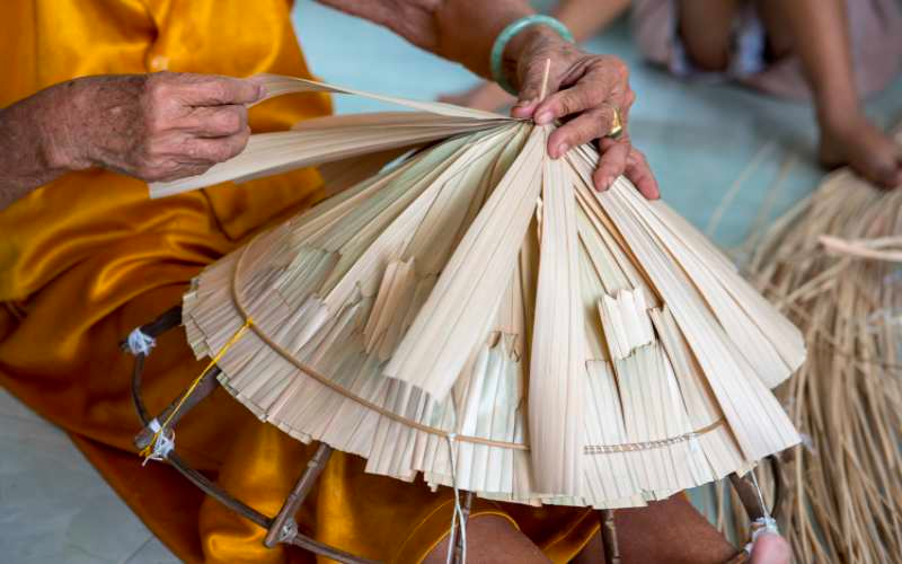
The conical hat of Vietnam is more than just a recognizable national symbol. They are constructed to withstand rain and sunlight, and the techniques for making them have been passed down from generation to generation. The Vietnamese Non-La hat is an iconic, irreplaceable symbol. Handmade and worn through all four seasons, they are a lifelong companion.
A Short History of The Vietnamese Conical Hat
The conical hat has been worn for millennia and remains a traditional symbol of Vietnam. Although conical hats are popular throughout Southeast Asia, it is believed that they originated in Hue, Vietnam. Given that they are portrayed on terracotta vessels older than 2,000 years, it is probable that they have been worn in some form for several millennia.
The conical hats worn by employees today are nearly identical in size and design. There is evidence to imply that this is a more recent development in the history of the hat, as historical photographs depict different varieties being worn by men, women, and people from all walks of life.

From attire to traditions to fruit, many things in Vietnam have their own mythology. Given that the conical hat is commonly worn by rice farmers in the country, it is not surprising that the hat’s myth is associated with rice cultivation.

Once upon a time, there was a weather goddess in the sky who worked to protect the harvest from rain. To do this, she wore four enormous leaves on her head, which allowed the rain to drain off and protected the crop. Thus, the unique design of the conical hat was inspired.
How to Make Vietnamese Conical Hat?
Vietnamese conical hats are often made from inexpensive natural materials that withstand extreme heat and humidity. Palm and bamboo leaves are the most preferred materials. The framework is often composed of bamboo, and then dried leaves are weaved into the hat in a way that renders it almost waterproof. Typically, hats are adorned with a rattan, cotton, or silk ribbon. If the hat is used for ceremonial reasons, ribbons may have a vibrant hue.

Initially, the framework of the hat is constructed using ribbed bamboo canes and string. For the covering, palm leaves are sun-dried, then partially roasted on a hotplate and pressed with a heavy object. This makes them far simpler to weave appropriately. Leaves are chopped to size and attached with additional bamboo canes to the framework. Afterward, the second layer of shinier leaves has adhered on top. Each hat takes between three and four hours to hand-stitch the leaves in place.
Making a conical hat requires years of experience, and agricultural families often make them in between shifts as a means of earning additional revenue. Makers begin learning their skills as youngsters, and it may take years to master their technique and guarantee that the weave thoroughly repels the elements.
Where to buy conical hat
If you ask me where you can find the best conical hat, I would say that due to its popularity, each region in Vietnam has a well-known conical hat – making village. The conical hat of the Tay group has a distinctively red color, whereas that in Thanh Hoa differs from others with a 20-hem frame. Hue’s is thin and elegant, contrary to the thick ones from Binh Dinh.
Chuong village produces 7,000 to 8,000 conical hats per day and about three million hats per year for both domestic use and export. “Our regular clients from the south, the centre or other northern provinces phone in orders so we can deliver immediately,” said Tuy, a 40-year old craftsman. “My latest contract is with a handicrafts export company, in which I proposed to export up to 5,000 conical hats to Japan.”
It seems that every family in Chuong village is making conical hats. According to statistics, 80 percent of the village’s population earn their living by conical hat production. The average income is around VND 700,000 to VND 1 million a month; the income is higher in summer than in winter as it is harder to sew the hats in winter. In Hanoi, a conical hat might cost VND 30,000 to VND100, 000 depending on the quality.
Conical hats are a unique and important part of Vietnamese culture. They are a symbol of Vietnamese identity and are worn by people of all ages and social classes. Conical hats are also a popular tourist souvenir and can be found in markets and shops all over Vietnam.
Vietnam warmly welcomes you to enjoy Vietnamese cuisine and culture and to make your trip go smoothly as the very first step, make your plan into reality by obtaining a Vietnam visa at https://www.vietnam-evisa.org.
Source: asianwaytravel.com